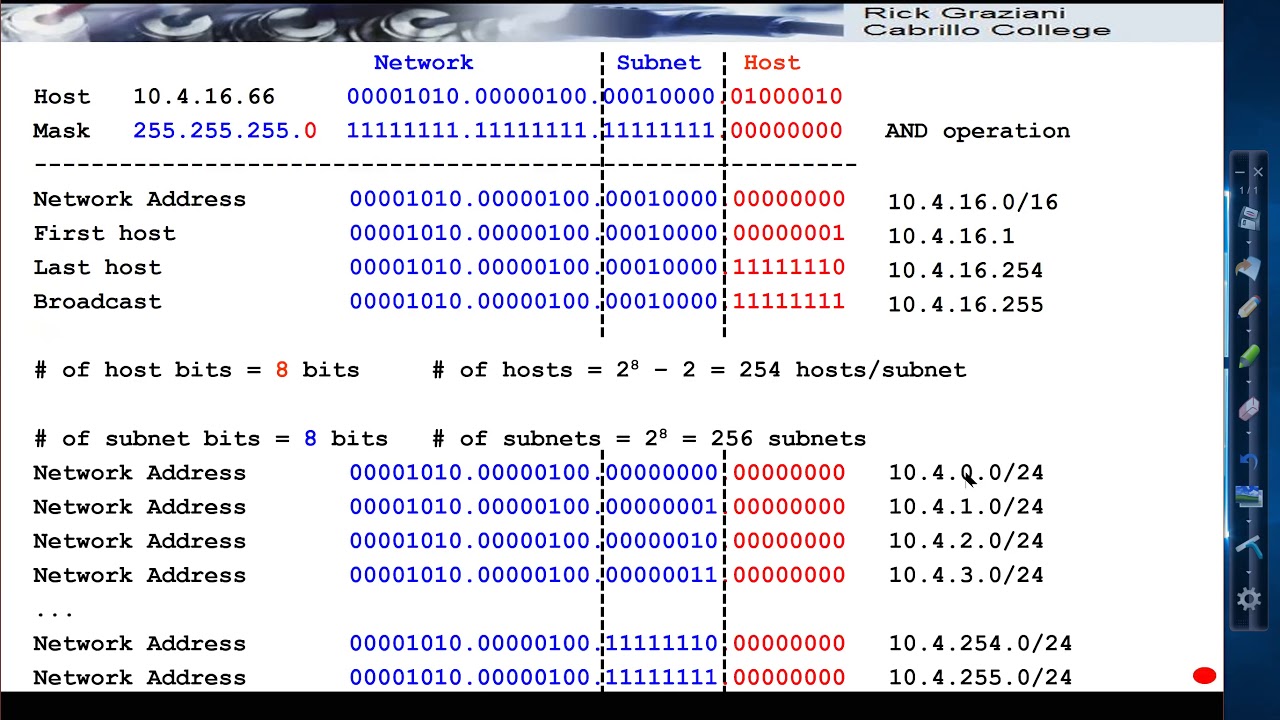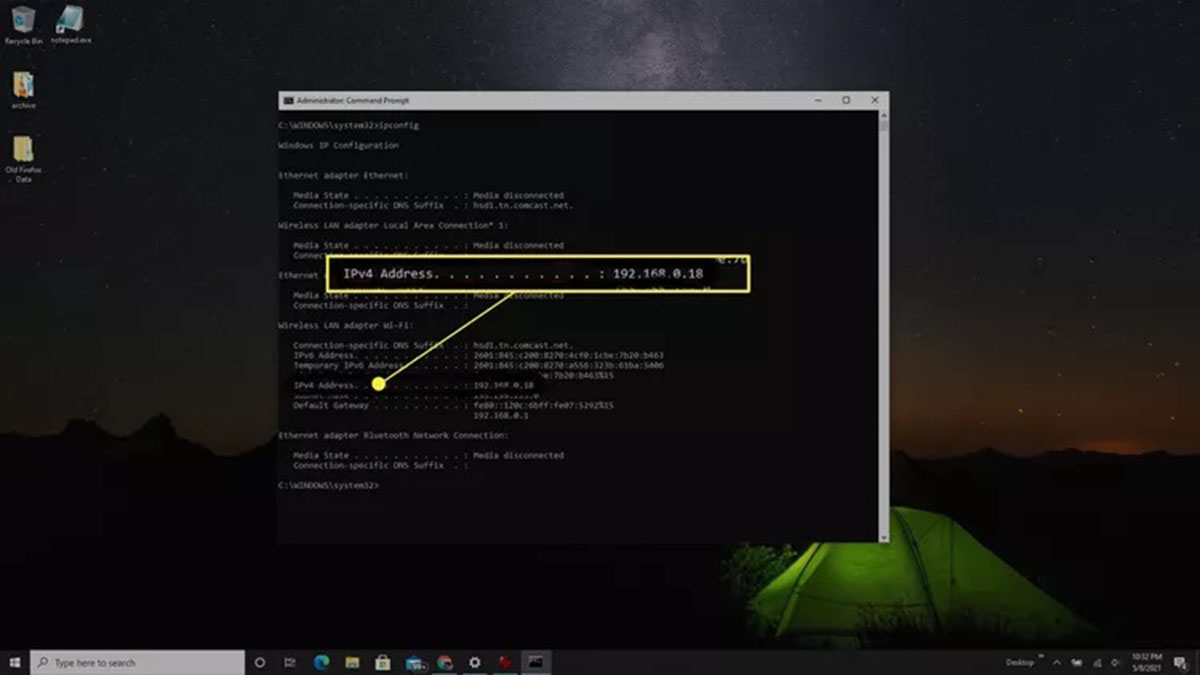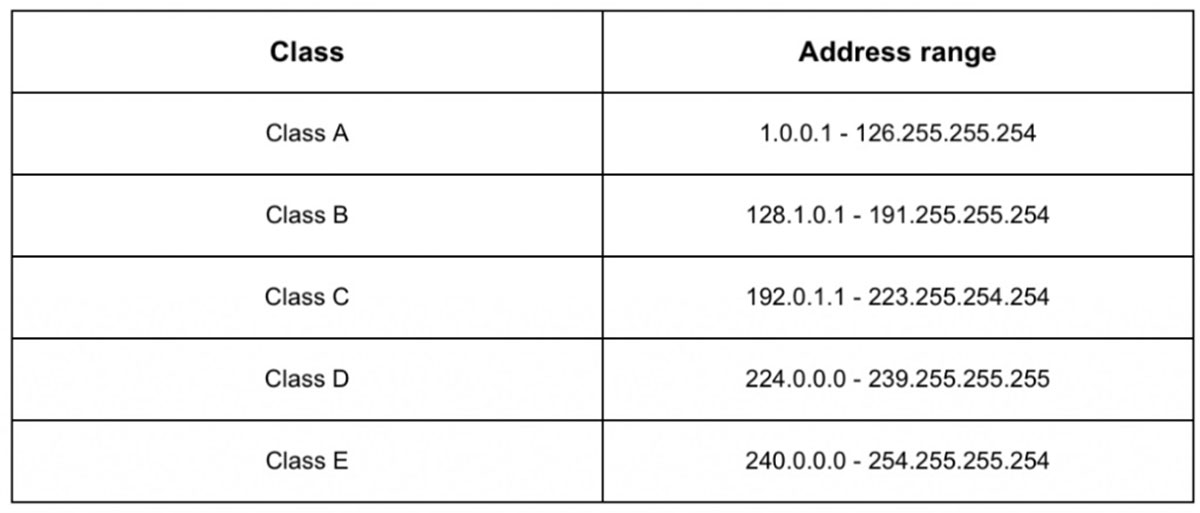Introduction
Welcome to the world of IP subnetting! In today’s digital age, where connectivity plays a vital role in our personal and professional lives, understanding IP subnets is crucial for anyone working with computer networks. Whether you are an IT professional, a network administrator, or a curious learner, this article will provide you with a comprehensive insight into the fascinating world of IP subnetting.
IP subnetting is an essential concept in networking that allows us to efficiently manage and organize IP addresses. It helps us divide a large network into smaller, more manageable subnets, enabling better utilization of available IP address space. By dividing a network into subnets, we can enhance network performance, improve security, and simplify network management.
In this article, we’ll explore the fundamentals of IP subnetting, including the definition, working principles, benefits, and the subnetting process. Additionally, we’ll examine the differences between classful and classless IP subnetting, as well as the CIDR notation commonly used in modern networking.
But before we dive deeper into the technicalities, let’s take a moment to understand the basics of IP addresses. An IP address is a unique numerical identifier assigned to every device on a network. It allows devices to communicate with each other over the internet or local network. IP addresses are typically written in a dotted-decimal format, such as 192.168.0.1, where each number represents a part of the address.
Now that we have a basic understanding of IP addressing, let’s explore the fascinating world of IP subnetting and discover how this concept revolutionizes network management.
Definition of IP Subnet
An IP subnet is a logical subdivision of a larger network. It is created by dividing a network into smaller segments, allowing for better management and allocation of IP addresses. Subnetting enables efficient use of available IP address space and facilitates the organization and categorization of devices within a network.
When a network is subnetted, it is divided into multiple smaller networks, each with its own unique range of IP addresses. These smaller networks, known as subnets, can be assigned to different departments, floors, or even specific devices within an organization.
The IP subnetting process involves using a subnet mask, a 32-bit number that determines the size and range of each subnet within a network. The subnet mask acts as a filter that separates the network portion of an IP address from the host portion.
For example, consider a network with the IP address 192.168.0.0 and a subnet mask of 255.255.255.0. In this case, the first three octets (192.168.0) represent the network portion, while the last octet (0) represents the host portion. By altering the subnet mask, we can create smaller subnets within the network, such as 192.168.1.0, 192.168.2.0, and so on.
IP subnetting allows for efficient utilization of IP addresses by allocating them based on the size and requirements of each subnet. Smaller subnets can be dedicated to high-demand areas, while larger subnets can be assigned to less populated areas or devices that require fewer IP addresses. This allocation helps prevent IP address exhaustion and ensures that IP addresses are used effectively.
Overall, the definition of IP subnetting involves dividing a larger network into smaller logical subnets, each with its own range of IP addresses and subnet mask. This division enables efficient network management, improved IP address utilization, and enhanced organization of devices within a network.
How Does IP Subnet Work?
To understand how IP subnetting works, let’s delve deeper into the process. When a network is subnetted, it is divided into smaller segments based on the desired number of subnets and the number of devices within each subnet.
First, a subnet mask is assigned to the network. The subnet mask is a 32-bit binary value that consists of both network and host components. It determines the network portion and the host portion of an IP address.
Next, the subnet mask is applied to the IP addresses within the network. The network bits, which are determined by the subnet mask, identify the network itself, while the host bits define each individual device within the network.
The network bits and host bits in the subnet mask are represented by 1s and 0s. The 1s indicate the network bits, while the 0s represent the host bits. The number of network bits and host bits in the subnet mask determines the size of each subnet.
For example, let’s consider a network with the IP address 192.168.0.0 and a subnet mask of 255.255.255.0. The subnet mask has 24 network bits and 8 host bits, allowing for a maximum of 256 (2^8) unique IP addresses in each subnet.
Once the network is divided into subnets, each subnet can be assigned its own range of IP addresses. These addresses are used by the devices within the subnet to communicate with each other and devices on other subnets.
When a device wants to communicate with another device within its own subnet, it uses the destination IP address to determine whether the device is within its subnet. If it is, the device sends the data directly to the destination device within the same subnet.
However, if the destination device is on a different subnet, the source device sends the data to the default gateway (such as a router). The default gateway forwards the data to the appropriate subnet, allowing devices from different subnets to communicate with each other.
In summary, IP subnetting works by dividing a network into smaller subnets using a subnet mask. Each subnet is assigned its own range of IP addresses, enabling efficient communication between devices within the subnet and across different subnets through the use of a default gateway. This segmentation of the network enhances performance, simplifies network management, and optimizes IP address utilization.
Benefits of IP Subnetting
IP subnetting offers several benefits that make it an essential technique in modern networking. Let’s explore some of the key advantages of IP subnetting:
- Improved Network Efficiency: Subnetting allows for better utilization of available IP address space by dividing a network into smaller, more manageable subnets. This prevents wastage of IP addresses and ensures that each subnet has enough addresses for its devices.
- Enhanced Network Performance: By segmenting a network into subnets, network traffic can be localized to specific areas, reducing congestion and improving overall network performance. Devices within the same subnet can communicate directly with each other, leading to faster data transfer and lower latency.
- Increased Network Security: IP subnetting enhances network security by allowing administrators to apply different security policies to different subnets. Access control lists (ACLs) can be configured at the subnet level, ensuring that devices within a specific subnet have limited access to other subnets, thus reducing the risk of unauthorized access and potential security breaches.
- Simplified Network Management: With IP subnetting, network administrators can organize devices into logical groups based on their purpose, department, or location. This simplifies network management tasks like network monitoring, troubleshooting, and maintenance. Administrators can apply specific configurations and policies to each subnet, making network administration more efficient.
- Scalability: Subnetting provides scalability options by allowing for the addition of more subnets as the network grows. New subnets can be easily created without disrupting the existing network infrastructure, allowing for seamless expansion and accommodating the increasing number of devices or network segments.
- Improved IP Address Management: By subnetting a network, IP address management becomes more organized and efficient. Devices within each subnet can be assigned IP addresses from a dedicated range, making it easier to track and allocate addresses. This minimizes the chances of IP address conflicts and simplifies IP address assignment and documentation processes.
These are just a few of the many benefits that IP subnetting brings to network management. By implementing proper subnetting techniques, organizations can optimize their network infrastructure, improve performance, enhance security, and streamline network administration tasks.
Subnet Mask
A subnet mask is a crucial component of IP subnetting that determines the division between the network portion and the host portion of an IP address. It is represented as a 32-bit binary value or as a dotted decimal notation, similar to an IP address.
The subnet mask consists of a series of 1s and 0s, where the 1s represent the network bits and the 0s represent the host bits. The number of network bits and host bits in the subnet mask defines the size of the subnet and the maximum number of devices that can be assigned within that subnet.
For example, consider a subnet mask of 255.255.255.0, which has 24 network bits and 8 host bits. This means that the first 24 bits are dedicated to the network portion, allowing for a maximum of 2^8 (256) unique IP addresses to be assigned in each subnet.
The subnet mask is applied bitwise to an IP address to determine the network address. By performing a logical AND operation between the IP address and the subnet mask, the network portion of the IP address is isolated, revealing the network address.
Let’s take an IP address example of 192.168.0.25 with a subnet mask of 255.255.255.0. Applying the subnet mask bitwise to the IP address yields the network address 192.168.0.0.
It’s important to note that all devices within a subnet must share the same subnet mask. This allows them to correctly determine which devices are on the same subnet and which devices are on different subnets, facilitating communication and routing decisions.
In addition to the traditional subnet mask notation, CIDR (Classless Inter-Domain Routing) notation is also widely used. CIDR notation combines the IP address and the number of network bits in a single format, separated by a forward slash (/). For example, the CIDR notation for a subnet mask of 255.255.255.0 is /24.
Properly configuring the subnet mask is crucial for correct network communication and address allocation. It allows network administrators to effectively divide a network into subnets, allocate IP addresses, and manage network resources efficiently.
Subnetting Process
The subnetting process involves dividing a network into smaller subnets to efficiently allocate IP addresses and manage network resources. Let’s explore the steps involved in the subnetting process:
- Determine the Required Number of Subnets: Identify how many subnets are needed based on the number of departments, floors, or devices within your network. This will help determine the number of subnet bits required in the subnet mask.
- Determine the Required Number of Hosts per Subnet: Assess the number of devices that will be connected to each subnet. This information will assist in calculating the number of host bits required in the subnet mask.
- Select the Subnet Mask: Choose a suitable subnet mask based on the desired number of subnets and hosts per subnet. The subnet mask will determine the size and range of each subnet.
- Calculate the Number of Network Bits and Host Bits: Determine the number of network bits and host bits in the selected subnet mask. This calculation will define the size of each subnet and the number of devices that can be assigned within each subnet.
- Assign Subnet Ranges: Divide the IP address range of the original network into smaller subnets. Each subnet should have a unique range of IP addresses that falls within the boundaries defined by the subnet mask.
- Assign IP Addresses to Devices: Allocate the appropriate IP addresses to devices within each subnet. Each device in a subnet should be assigned an IP address that falls within the designated subnet range and follows the subnet mask guidelines.
- Configure Routing: Configure routing tables and default gateways to enable communication between devices in different subnets. This enables devices from separate subnets to exchange data and access resources on other subnets.
By following these steps, network administrators can effectively subnet a network, allocate IP addresses, and manage network resources efficiently. Proper planning and implementation of the subnetting process are key to building a scalable and well-organized network infrastructure.
Classful vs. Classless IP Subnetting
Classful and classless IP subnetting are two different approaches to dividing IP address space. Let’s explore the differences between these two methods:
Classful IP Subnetting:
In the early days of networking, IP addresses were divided into classes, known as Class A, Class B, and Class C. Each class had a fixed subnet mask, which determined the default size and range of the network and host portions of the IP address.
Classful IP subnetting assumes that all subnets within a network will have the same subnet mask as the default class. For example, in Class C, the default subnet mask is 255.255.255.0.
With classful IP subnetting, network administrators could only divide a network into the predefined classes. This led to inefficient utilization of IP address space, as each class had a fixed number of available IP addresses.
Classless IP Subnetting (CIDR):
Classless Inter-Domain Routing (CIDR) was introduced to overcome the limitations of classful IP subnetting. With CIDR, the subnet mask can be customized, allowing for more flexible subnetting and better utilization of IP addresses.
CIDR notation represents the subnet mask as a number of network bits rather than as a predefined class. It combines the IP address and the number of network bits using a forward slash (/) separator. For example, a subnet mask of 255.255.255.0 is represented as /24.
With classless IP subnetting, networks can be divided into variable-size subnets based on the needs of the organization. This allows for efficient allocation of IP addresses and more precise network configurations.
Classless IP subnetting also introduced Variable Length Subnet Masking (VLSM), which enables the allocation of different subnet sizes within the same network. This allows administrators to optimize IP address allocation by allocating larger subnets to areas with more devices and smaller subnets to areas with fewer devices.
In summary, classful IP subnetting relies on fixed subnet masks based on predefined classes, while classless IP subnetting (CIDR) allows for more flexible subnetting by using variable subnet masks. CIDR allows for better utilization of IP addresses, more precise network configurations, and the ability to allocate different subnet sizes within the same network.
CIDR Notation
CIDR (Classless Inter-Domain Routing) notation is a compact and flexible way to represent IP addresses and subnet masks. It eliminates the limitations of classful IP addressing and provides a more precise and efficient method for subnetting. CIDR notation combines the IP address and the number of network bits to represent the subnet mask in a simplified format.
In CIDR notation, an IP address is followed by a forward slash (/) and then the number of network bits. For example, 192.168.0.0/24 represents an IP address 192.168.0.0 with a subnet mask of 255.255.255.0.
The number after the slash (/) indicates the number of consecutive 1s in the subnet mask. This number represents the network bits, while the remaining bits are reserved for the host portion of the IP address.
Using CIDR notation, networks can be divided into smaller subnet sizes than the traditional classful method, resulting in a more efficient utilization of IP address space. For example, with CIDR, it is possible to divide a network into subnets with different sizes, such as /24, /25, or /26, allowing for more precise allocation of IP addresses based on the needs of each subnet.
The CIDR notation also enables the practice of Variable Length Subnet Masking (VLSM), which allows administrators to allocate different subnet sizes within the same network. This flexibility in subnet size allocation helps optimize IP address usage and network design.
One of the advantages of CIDR notation is its simplicity and ease of use. It provides a concise way to represent subnet masks and makes it easier to communicate and understand network configurations. CIDR notation also plays a vital role in routing protocols, as it allows routers to efficiently exchange routing information and make forwarding decisions based on the network prefix length.
In summary, CIDR notation is a more flexible and efficient method for representing IP addresses and subnet masks. It allows for the precise allocation of subnet sizes, facilitates efficient network design, and simplifies routing protocols. The simplicity and effectiveness of CIDR notation make it a widely adopted standard in modern networking.
Conclusion
IP subnetting is an essential concept in networking that allows for efficient management, organization, and allocation of IP addresses within a network. By dividing a large network into smaller subnets, IP subnetting enhances network performance, improves security, simplifies network management, and optimizes IP address utilization.
In this article, we explored the fundamentals of IP subnetting, including the definition, working principles, benefits, and the subnetting process. We learned about the subnet mask, which determines the division between the network portion and the host portion of an IP address, and its role in subnetting.
We delved into the differences between classful and classless IP subnetting. Classful subnetting relied on fixed subnet masks based on predefined classes, while classless subnetting (CIDR) introduced a flexible approach, allowing for variable subnet sizes and better utilization of IP addresses.
Additionally, we discovered the importance of CIDR notation, which simplifies the representation of IP addresses and subnet masks, facilitating efficient communication, network design, and routing protocols.
Understanding IP subnetting is vital for network administrators, IT professionals, and anyone working with computer networks. By implementing proper subnetting techniques, organizations can optimize network performance, enhance security, streamline network management, and effectively allocate IP addresses.
In conclusion, IP subnetting revolutionizes network management by providing a scalable, efficient, and well-organized approach to IP address allocation. It empowers organizations to create robust and flexible networks that meet their unique requirements and adapt to growth and changes in network infrastructure.

























